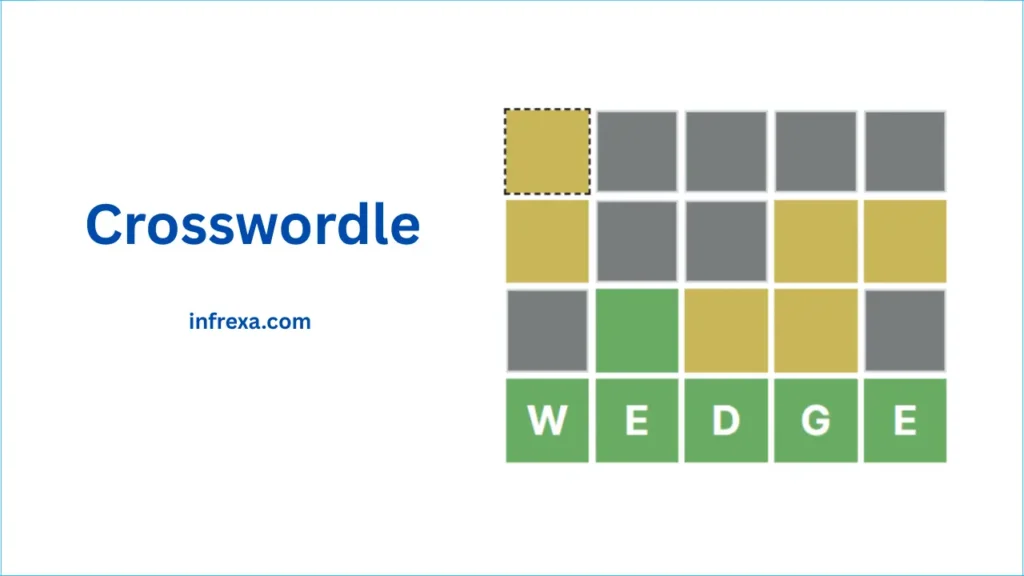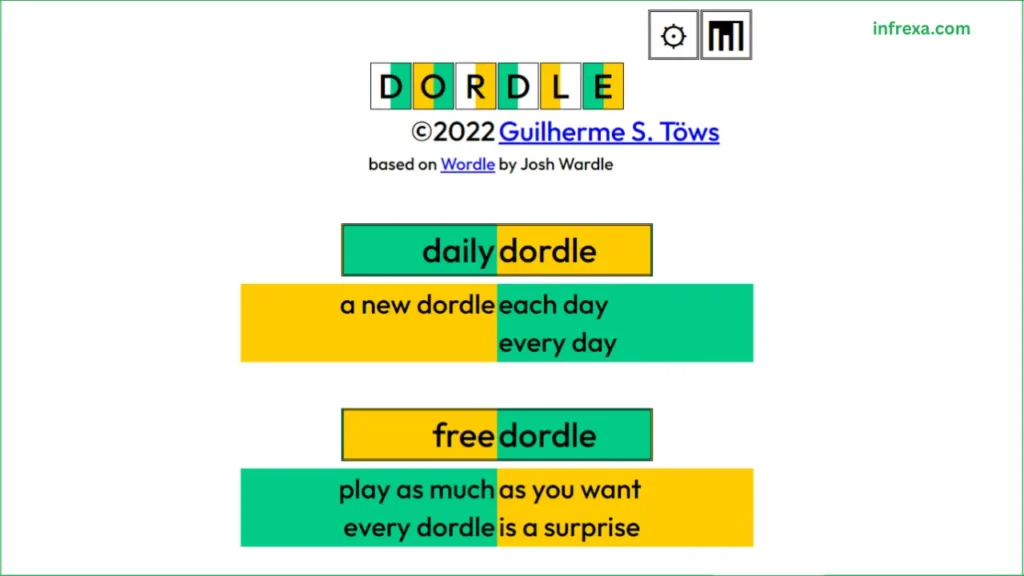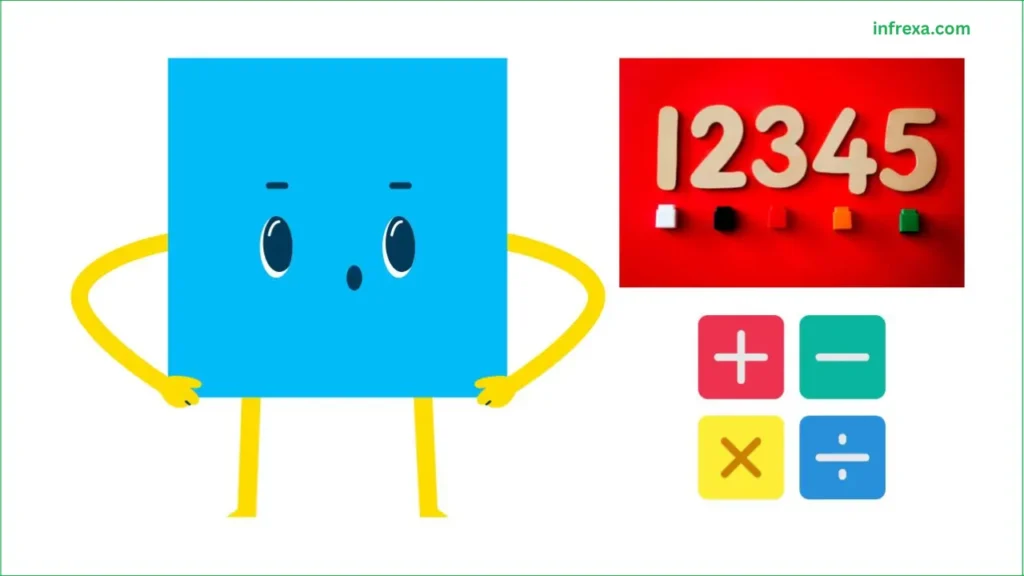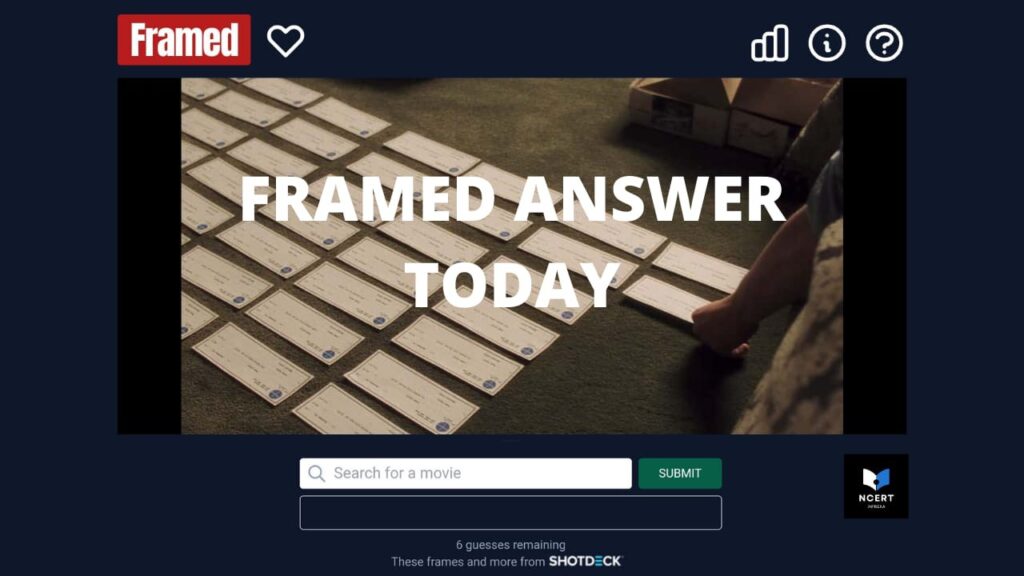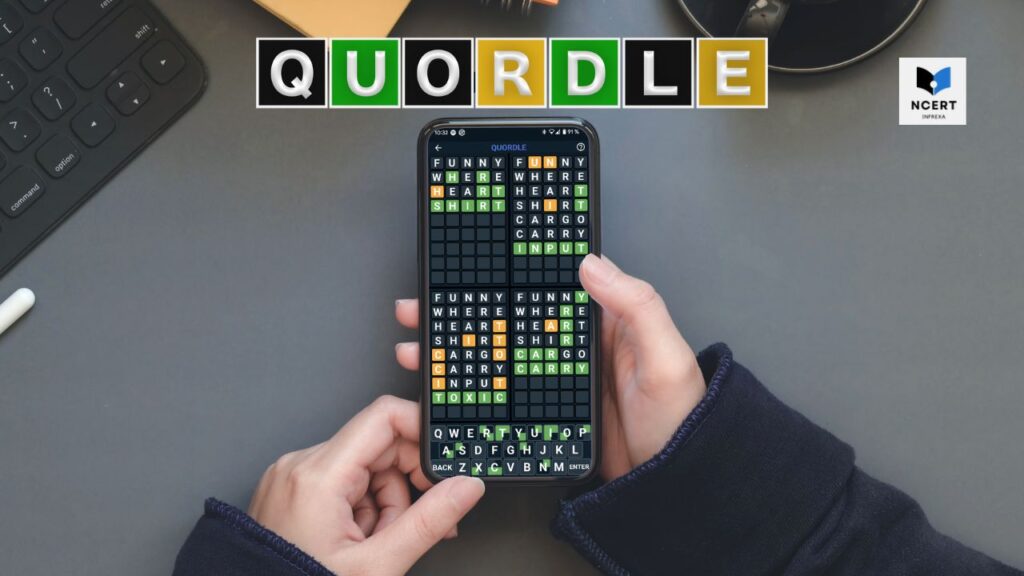Crosswordle is a single-player word puzzle that flips the script on traditional word games. Unlike Wordle, Crosswordle gives you the final answer upfront – known as the Final Word – and challenges you to work backward to fill in the words above it. Each row must obey the color-coded constraints shown by the Final Word.
I’ve personally found Crosswordle both frustrating and fascinating – it forces your brain to reverse-engineer logic instead of guessing forward like in Wordle. Once you understand how the inverted constraint system works, the puzzle becomes deeply rewarding.
Game Concept (The Inverted Constraint System)
In Crosswordle, you start from the Final Word (bottom row) and work upward. The colors shown on that Final Word apply not to your next guess directly, but to the word you must create in the row above.
This is the game’s central twist – you’re solving a Wordle in reverse.
| Color | Meaning on Final Word | What It Means for the Word Above |
|---|---|---|
| Green | Letter is correct and in the same position. | You must use the same letter in the same position. |
| Yellow | Letter is in the word but in a different position. | You must include that letter, but not in the same spot. |
| Grey / Black | Letter is not in the final word. | You cannot use that letter anywhere in the guess above. |
How to Play Crosswordle (Step-by-Step Example)
Crosswordle is accessible on any browser – desktop or mobile. You can play it with or without a timer.
1. Identify the Final Word
Open the official Crosswordle page. You’ll see the Final Word (bottom row), which is your reference point. Example: The final word is WEDGE.
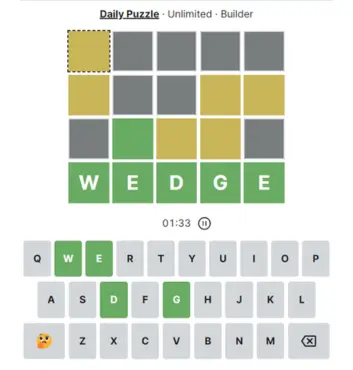
2. Apply Color Guidance
Each color tile gives a mandatory clue for the next row:
- Green squares: The letter stays in that position.
- Yellow squares: The letter must appear in the final word but move to a different spot (column).
- Grey/Black squares: That letter must not appear at all in your next guess.
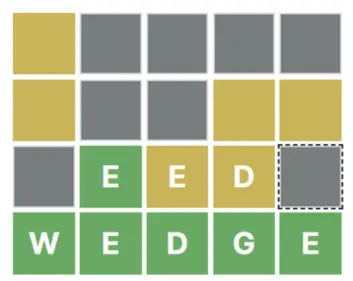
For example, if the Final Word WEDGE shows a Green ‘E’, your next row must also include E in that same position.
If it shows Yellow ‘D’, then ‘D’ must appear somewhere else in your new word.
3. Work from the Row Just Above the Final Word
Start building the word directly above the Final Word, which is at the bottom end of the grid in Green.
- Suppose you have two yellow tiles – that means those letters must appear in your new word, but not in the same positions.
- Grey tiles? Avoid those letters completely.
- Green tiles? Lock them exactly where they are.
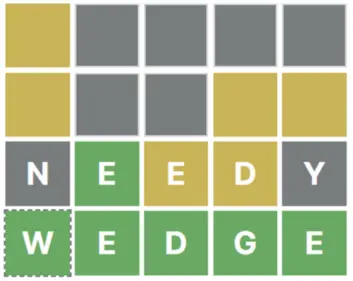
(Note: Crosswordle daily mode has six rows – five above the Final Word.)
In my experience, starting from the row immediately above the Final Word makes it easier to visualize constraints – you can clearly see how each row influences the one above it.
4. Use Elimination and Logic
Each completed row becomes the new constraint for the next one above. If you get stuck, think backward:
- Which letters can’t appear anymore?
- Which letters must be reused but relocated?
- Which Green letters are locked permanently?
This logical rhythm is what makes Crosswordle so addictive – you’re not just guessing words; you’re managing rules.
5. Repeat Until Complete
Keep climbing upward until you fill all rows correctly.
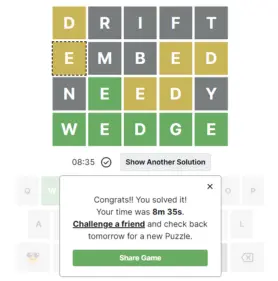
Once you solve the top row, you’ll have reconstructed the entire logical path leading to the Final Word. The satisfaction is similar to solving a mini crossword and a Wordle simultaneously.
Game Tips & Strategies
- Only valid English words are accepted.
- Sequential logic is everything – each row defines the one above.
- Try unique letter combinations early to reveal more constraints faster.
- Play untimed first. Once you understand the system, try timed mode for a greater challenge.
- Check patterns visually – writing notes or using a notepad for trial letters helps beginners.
- Common crossword-style words (like “EERIE,” “ALLOT,” “SWEDE”) often appear; keep them in mind.
When I first played, I often forgot that yellow tiles don’t belong in the same position – once I started tracking that on paper, I improved dramatically.
Why People Like Me Love Crosswordle
Crosswordle doesn’t just test your vocabulary – it rewires your thinking.
Unlike Wordle, where progress is linear, here it’s retroactive reasoning. The deeper you go, the clearer your mistakes become, which makes every correct word feel like a genuine achievement.
From my own experience, the joy lies in reconstructing logic rather than guessing it. It feels more like solving a riddle than playing a guessing game – and that’s exactly why Crosswordle has earned its cult following.
Where to Play
You can play Crosswordle for free on its official website, accessible from both mobile and desktop browsers. Some fan versions also offer archive modes and expanded word lists for endless practice.
For more brain games and strategy guides, explore our related pages on Poeltl and Morning Puzzle Games – each offers a unique way to challenge your reasoning and vocabulary.
Similar Games You’ll Love
If you enjoy Crosswordle’s reverse logic, try these related puzzles:
- Waffle: Swap letters on a grid to complete intersecting words.
- Quordle: Solve four Wordle puzzles simultaneously.
- Octordle: Take it further with eight grids at once.
- Framed: Guess the movie based on a single still image – another brainy challenge.
FAQs
Q: How many rows are there in Crosswordle?
A: Typically, there are five rows above the Final Word, but it may vary depending on the platform.
Q: Can letters repeat in Crosswordle?
A: Most versions allow repeated letters (like “MUMMY”), but some daily challenges restrict them. Always check the site’s rules.
Q: Is there a daily Crosswordle challenge?
A: Yes, many platforms reset with a new Final Word each day – adding replayability like Wordle.
